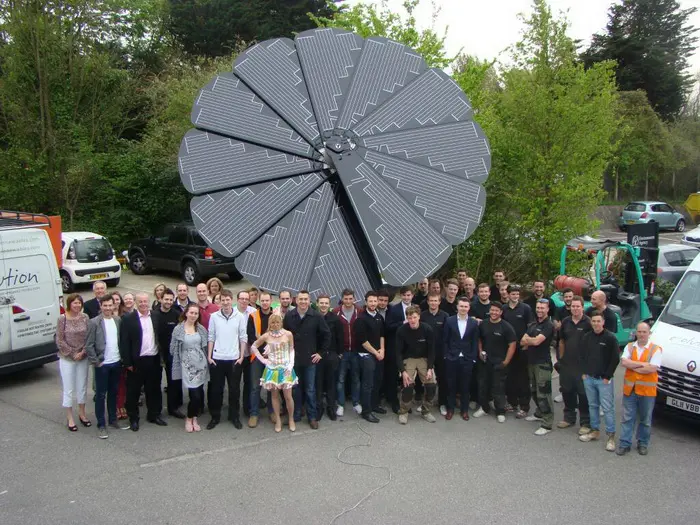
A concept developed at the National Renewable Energy Laboratory (NREL) may simplify the process to manufacture perovskite solar cells, possibly accelerating the path toward the technology’s commercialization.
Perovskite solar cells are made by depositing various layers onto a conductive glass substrate. Multiple coatings are needed to create the full device structure. The technique from NREL combines or eliminates altogether some of the steps, simplifying the manufacturing process and potentially lowering manufacturing costs.
Perovskite is a calcium titanium oxide mineral composed of calcium titanate. Its name is also applied to the class of compounds which have the same type of crystal structure as CaTiO₃, known as the perovskite structure.
Perovskite solar cells are composed of a perovskite light-absorbing layer and layers that extract positive and negative charges on opposite sides of the perovskite when light is absorbed.
One of the layers, called the hole-transport layer (HTL), extracts positive charges. Perovskites can be made without an HTL, but such devices’ efficiency lags that of the full perovskite solar cell device structures.
In its research, the NREL team produced a high-efficiency solar cell that retained more than 90% of its initial efficiency after 1,200 hours of continuous operation.
Xiaopeng Zheng, a postdoctoral researcher in NREL’s Chemistry and Nanoscience Center, reported in Nature Energy how a one-step solution-coating procedure allowed two separate layers– the HTL and perovskite absorber–of a solar cell to spontaneously form with only one coating step. Doing so eliminates the separate hole-transport layer fabrication.
Instead, the article reported that the chemical solutions form “a robust self-assembled monolayer simultaneously as an excellent hole-selective contact while the perovskite crystallizes.”
Zheng said the new, simplified process to make the HTL and perovskite simultaneously reduces the number of coating and heating steps and removes the need for often expensive HTL materials.
He estimated that removing the steps first to create the HTL and then to heat it could cut the solution-processing time by a third.
The paper, “Co-deposition of Hole Selective Contact and Absorber for Improving the Processability of Perovskite Solar Cells,” was co-authored by researchers from Hong Kong, Switzerland, and Lithuania, as well as the University of Kentucky, the University of Toledo, and Brown University.
The initial discovery was made at NREL, and co-authors found the same effects and strengthened the findings, Zheng said.
Support for the research came from the Center for Hybrid Organic-Inorganic Semiconductors for Energy, an Energy Frontier Research Center funded by the U.S. Department of Energy’s Office of Basic Energy Sciences. The manufacturability and scaling work was supported by the department’s Solar Energy Technologies Office.







